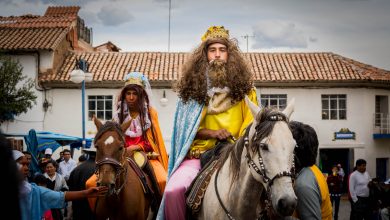The Chasquis and Communication in the Inca’s Time


Chasqui is a Quechua word that means, mail, person of relay. The chasqui was a young runner, considered the personal messenger of the Inca, that carried a message or message in the postal system of the Tahuantinsuyo,. He ran over the network of Inca roads at great speed and used a system of posts (tampus) to deliver messages or objects.
The chaskis were children of curacas, people of confidence, who from the time they were children were selected and prepared physically and then worked as chasquis. For this they had to have special qualities beyond the ability to run very fast. They had to have a very athletic physique and their lungs had to be particularly good. Their legs had to be strong and their toes were slightly open to fasten on irregular surfaces. They had to know all the roads and their shortcuts and be good swimmers. Communication in the Inca empire depended on them. To withstand cold, thirst, and fatigue they chewed coca leaves since for they were one of the few who were allowed to chew this sacred leaf.
Chasquis ran about 2.4 kilometers per hour in a stretch between a tampu (station of destination) and tampu. Upon reaching the new tampu, the chasqui delivered his message to another chasqui who then ran to the next tampu. Through this relay system, chasquis could cover enormous distances in a relatively short time. A message could travel up to 320 kilometers in just one day.
Chasquis was always carried a pututu, a conch shell trumpet, to announce his arrival and to alert his relief. As arms he carried a truncheon and a huaraca, woven sling, and a quipu, where he brought information, as well as a tether on his back, where he carried objects and packages. He had a rod and on his head a plume of white feathers as a visual identifier.
The Inca Empire had approximately 10 to 12 million inhabitants in the XVth century. In order to control the whole territory, the Incas made a network of roads to carry news and products. This network of roads was called “Qhapaq ñan” or “Capac ñan” in Quechua which means great road and also called “Inca ñan” or Inca road.

Nowadays one of these roads is known worldwide, the Inca trail that takes us to the citadel of Machupicchu.
The roads of the Inca Empire were built for the feet of the chasquis, to carry messages, packages, and also food like fish and fruits, each village had chasquis between 18 and 25 years, serving daily shifts of 6 to 12 hours assigned to them.
There were 2 techniques for carrying a message. One was the quipus, a series of colored and knotted ropes that served for administration. The other technique was words which the chasqui passed on repeating it several times when it arriving or they would run together with their relief over a section until the other chasqui remembered the message.
When the Spaniards came to Cusco, they were so impressed with the efficiency of the chasquis system that they remained even in the Viceroyalty of Peru. The Spanish chronicler Pedro de Cieza de Leon wrote:
“The Incas invented a system of posts that was the best of what could be thought or imagined … the news could not have been transmitted through a greater speed with speedy horses”,
These words of this chronicler demonstrate to us the importance that the chasquis had inside the system of communication.
[mnky_ads id=”28246″]



